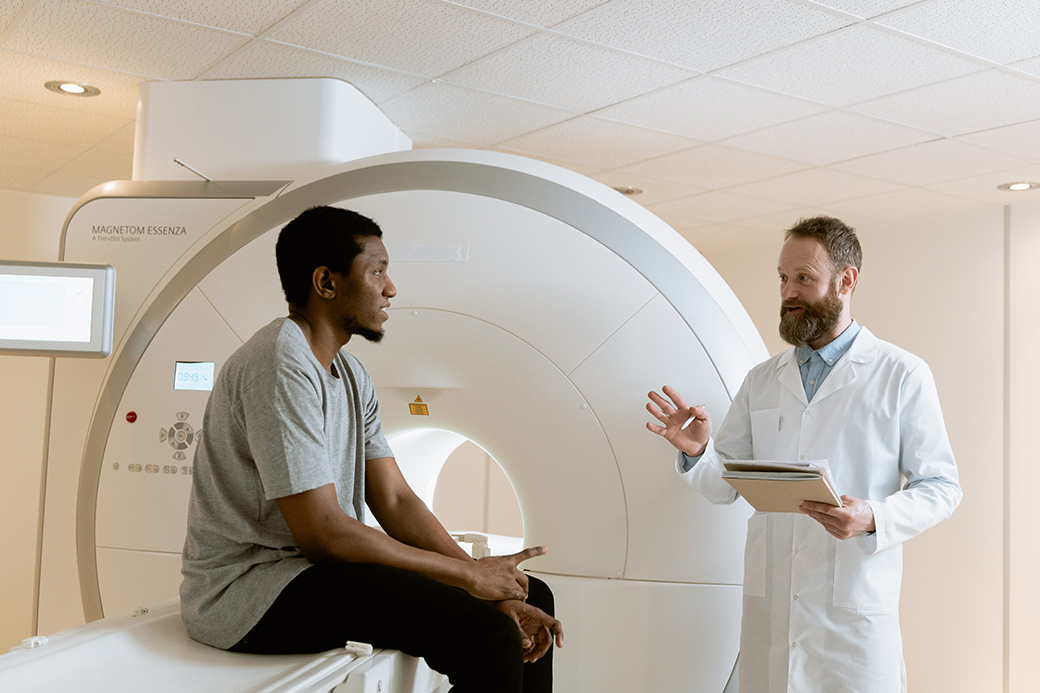
There’s no denying it: relationships between patients and healthcare providers just aren’t like they used to be.
Consider your last interaction with a provider. Did you find yourself doing your own research online before an appointment? Maybe you took advantage of some nifty new tech features- like scheduling or telemedicine via a mobile app– to make the experience more convenient.
You aren’t alone. According to data from four administrations of the Health Information National Trends Survey (2008 – 2017), the majority of people searched for health or medical information independently outside of their doctor’s advice. A staggering 68.9% of them used the internet first before seeing their doctor.
Little by little, our relationships with providers have transformed. Now we are active partners collaborating with providers in our quest for better health. That’s a far cry from the norm just a few decades ago when the standard procedure was to show up and put your faith in the provider as your exclusive information source.
This isn’t just some trend that will go away soon. If anything, these relationships will only continue to shift toward increased patient empowerment. In an article published in the Journal of the American Medical Association, Dr. Donald Berwick described three different eras of healthcare. In the first, patients placed their trust unquestioningly in their providers as their only information source. The second era focused on accountability and measurement. Dr. Berwick urged us to enter into what he calls “era 3,” focusing on collaboration between patients and providers and prevention. It seems that we are doing just that.
What does this mean for healthcare marketing?
New opportunities abound– if you’re willing to communicate with patients directly.

Image credit: MART PRODUCTION
Patients are becoming increasingly sophisticated partners with their providers and in their search for better health.
The result?
The amount of health-related information available online is exploding to meet increased demand. Massive websites like WebMD are just the starting point for many, who continue their research on social media, forums, and other online platforms.
The challenge for patients isn’t a lack of access to health information. It’s the opposite. How can they find quality information without getting overwhelmed, and use it to improve their health?
Confusing (or even downright inaccurate) information creates new obstacles to overcome. This can be frustrating for providers if patients engage them with preconceived notions about their medical conditions and the proper treatment…
On the other hand, patients armed with useful, accurate information can experience stronger relationships with providers and better health outcomes. In this challenge lies great opportunity.
An analysis of 34 randomized research trials found that patients who were informed on options and outcomes relevant to their health status:
Impressive, right?
While there are certainly growing pains in the new patient/provider relationship, there’s also potential for better health outcomes. Thanks to direct communication with patients, healthcare marketers can help.

Image credit: Julia M Cameron
Healthcare marketers who help empower patients with the information they need (and are searching for already) will connect with them like never before.
But these relationships will never form unless marketers are willing to speak to patients directly. If a patient encounters a brand but feels they’re being overlooked, they’ll continue their search elsewhere.
This might seem obvious, but it’s a major shift from how most healthcare marketers are used to communicating. The attitude of the past, which made perfect sense in an era where patients saw providers as their sole information source, was to focus on communication with the providers– the ones with the education and training to actually prescribe the drugs or install the medical devices.
Adapting to the changing relationship between patients and providers doesn’t mean disregarding communication with providers either. Rather, it means appealing to both audiences in a way that acknowledges their differences and gives them the information they need to form stronger relationships among themselves and with your brand.

Image credit: Andrew Piacquadio
Communicating with patients directly can seem overwhelming… but it doesn’t need to be. It all comes down to empathy. Imagine yourself in their shoes. Consider what needs to be said in order to help them better understand their health condition, and how to take action to improve.
Here are some key characteristics of effective patient communications:
Patients are taking charge in their journey to better health. They’re doing their own research. Now, more than ever before, they’re desperate for quality information they can use to make informed decisions.
Healthcare brands can help. Acknowledging this new audience– and being willing to communicate with them directly on their own terms– will leave an unforgettable impression, strengthen relationships between patients and providers, and create better health outcomes.